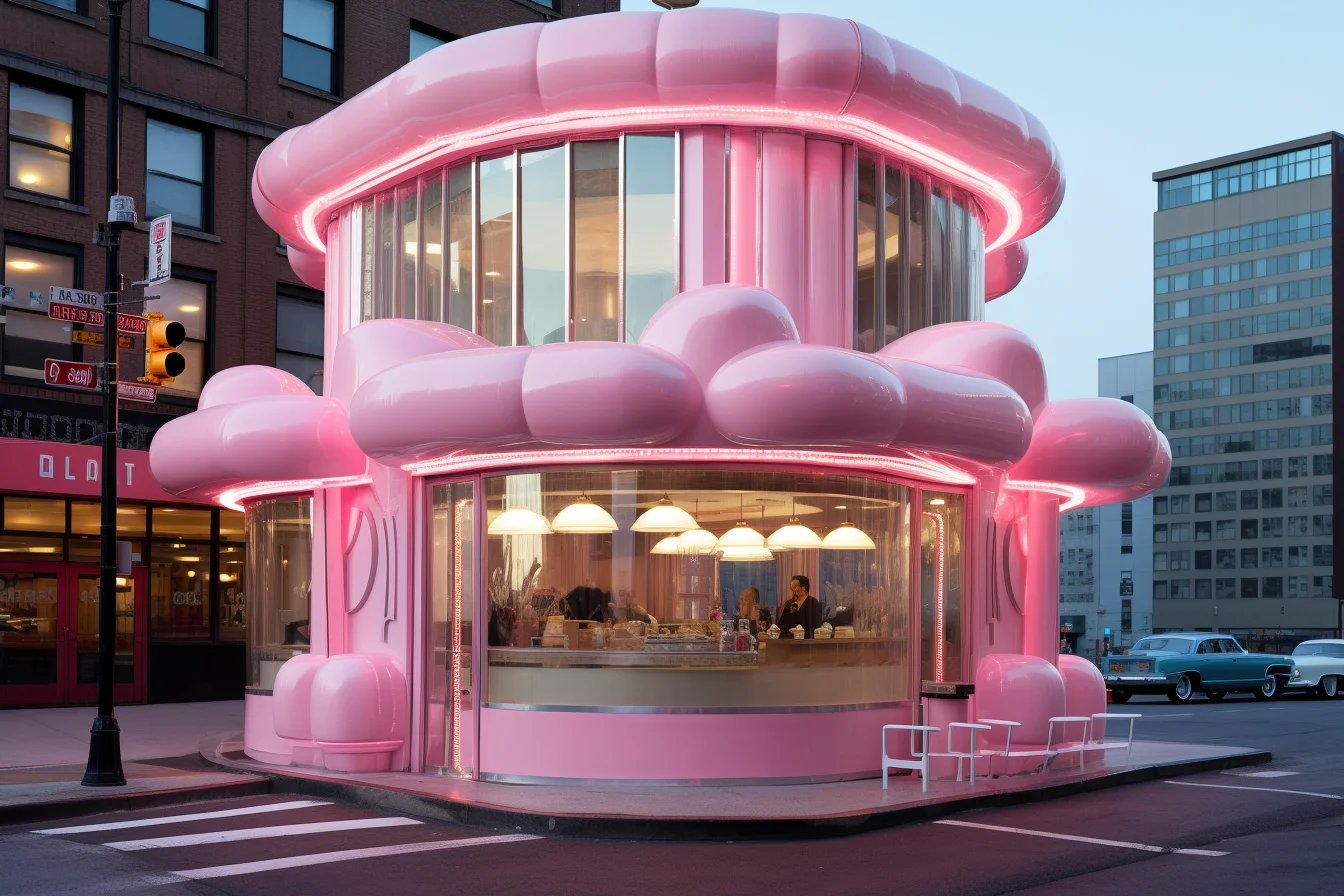The "Duck Building" Concept: A Quirky Approach to Restaurant Architecture
In the world of architecture, some buildings stand out not only for their functionality but also for their unique and symbolic designs. One such concept is the "Duck Building" idea, which takes its inspiration from the famous "Big Duck" structure built by Martin Maurer in 1931. Originally used as a shop for selling ducks and duck eggs, the term "Duck Building" has now found its way into the realm of restaurants. In this blog post, we'll explore how this quirky and imaginative concept is being applied to restaurants, creating eye-catching and memorable dining experiences for customers.
 Martin Mawer 1931
Martin Mawer 1931
Embracing Symbolism in Restaurant Design
The "Duck Building" concept in restaurant architecture revolves around creating structures that symbolically represent the essence of the restaurant's cuisine or theme. Just like "The Big Duck" symbolized its purpose as a duck-selling shop, these unique restaurants use their exterior design to convey a visual message to passersby, drawing them in with curiosity and excitement.
 Facade simulating eggs
Facade simulating eggs
 Milkshake shop
Milkshake shop
A Feast for the Eyes
Imagine strolling down a busy street and suddenly coming across a restaurant shaped like a giant burger, complete with sesame seed bun rooftop and pickle-shaped windows. The visual impact of such a creative building is undeniable, instantly capturing the attention of potential diners. The "Duck Building" approach transforms these restaurants into landmarks, making them the talk of the town and attracting foodies and Instagram enthusiasts alike.
 Big burger restaurant
Big burger restaurant
 Coffee shop
Coffee shop
Aligning with Culinary Themes
Beyond just being visually captivating, the "Duck Building" concept also allows restaurants to align their architectural design with their culinary themes. For example, an ice cream parlor could embrace a whimsical, ice cream cone-shaped building, while a seafood restaurant might take the form of a majestic ship on the shores. This alignment creates a cohesive and immersive dining experience, where patrons feel like they've stepped into a world where the food and ambiance complement each other flawlessly.
 Ice cream shop
Ice cream shop
 Sushi restaurant
Sushi restaurant
Marketing and Branding Power
In a world where social media dominates, the "Duck Building" idea can become a powerful marketing tool for restaurants. The distinctiveness of the building itself becomes a marketing asset, attracting organic online shares and buzz. Patrons are more likely to share photos of the restaurant's unique exterior, spreading the word about the restaurant's identity far and wide, and potentially leading to an increase in foot traffic and reservations.
 Donuts shop
Donuts shop
 Hot dog restaurant
Hot dog restaurant
Challenges and Considerations
While the "Duck Building" concept offers numerous benefits, there are some challenges and considerations that architects and restaurateurs must keep in mind. Local building codes and regulations might limit the extent of creativity, and practicality must not be overlooked in the pursuit of aesthetics. Additionally, the long-term appeal of such a design must be assessed to ensure it remains relevant and appealing to future generations of customers.
 Corn Flakes facade
Corn Flakes facade
While the allure of "Duck Buildings" is undeniable, architects and restaurateurs must approach their design with careful consideration. The process involves striking a delicate balance between innovation and functionality, ensuring that the restaurant's essence shines through while catering to the practical needs of a successful dining establishment.
 Italian restaurant
Italian restaurant
Spatial Efficiency
Creating a visually striking exterior should not compromise the interior's functionality. The layout must be thoughtfully planned to accommodate seating, kitchen facilities, and customer flow efficiently. A seamless integration of form and function is essential to avoid the pitfalls of sacrificing comfort for design novelty.
 Chocolate shop
Chocolate shop
 Interior of a restaurant
Interior of a restaurant
Environmental Considerations
Sustainability and eco-friendliness are crucial considerations in modern architecture. Integrating energy-efficient technologies, renewable materials, and green building practices should be at the forefront of any "Duck Building" project. By embracing eco-consciousness, these unique restaurants can lead the way in demonstrating a commitment to both creativity and environmental responsibility.
 Landscape integration - Restaurant in Netherlands
Landscape integration - Restaurant in Netherlands
Community Perception
The impact of an unconventional building on its surroundings should be taken into account. In close-knit communities, a "Duck Building" might be welcomed as an exciting addition to the local landscape. However, in more traditional neighborhoods, it could face resistance and skepticism. Engaging with the community and obtaining feedback during the design process can help address concerns and foster positive relationships.
 Integration in a medieval city center
Integration in a medieval city center
Longevity of the Concept
While novelty may attract initial attention, the "Duck Building" concept must have a timeless quality to remain relevant for years to come. As architectural trends evolve, a restaurant's distinctive shape could potentially become outdated. Striking the right balance between trendiness and timelessness is vital to ensure the restaurant's enduring appeal.
 The Big Duck restaurant
The Big Duck restaurant
The "Duck Building" idea applied to restaurants is an exciting and imaginative approach to architectural design. By blending symbolism, culinary themes, and marketing prowess, these unique structures offer an unforgettable dining experience. While challenges exist, the rewards are substantial, transforming restaurants into more than just places to eat but landmarks that leave a lasting impression on patrons and communities alike. As architects and restaurateurs continue to embrace this concept, we can look forward to a future where dining adventures are not only about savoring delicious meals but also about being immersed in a world of creative expression and architectural wonder.
 Immersive experience
Immersive experience